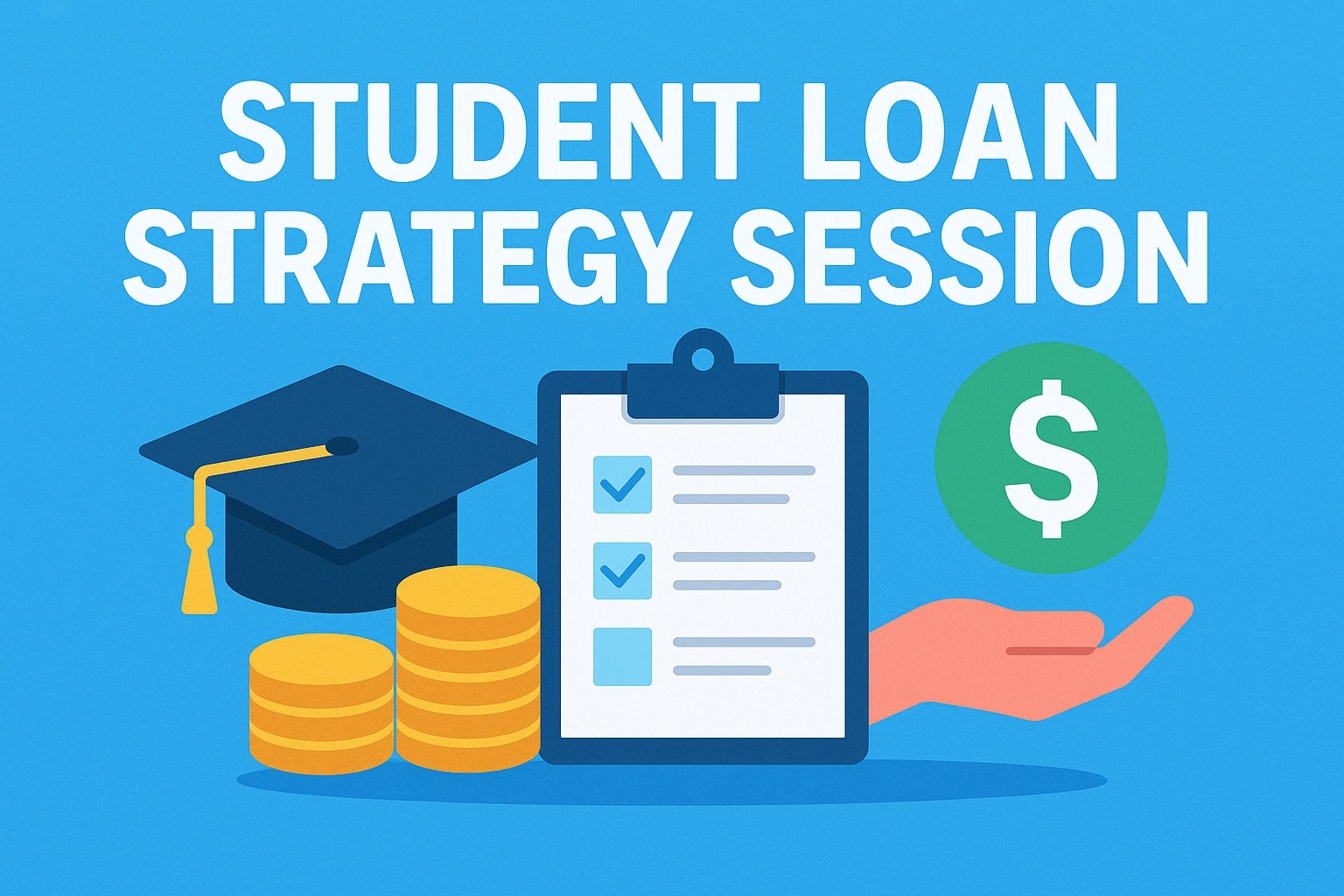Student Loan Strategy Session: Understanding Your Repayment Options

Student Loan Strategy Session: Understanding Your Repayment Options
Student loan debt can feel like a heavy weight, but understanding your repayment options is the first step toward taking control. The right strategy depends heavily on whether you have federal loans (from the U.S. Department of Education) or private loans (from banks, credit unions, or other lenders), as they offer very different paths. Let's break down the common options:
Federal Student Loan Options
Federal loans offer unique flexibility and forgiveness programs unavailable with private loans.
1. Standard Repayment Plan:
- What it is: The default plan. You pay a fixed amount each month for up to 10 years.
- Pros: You'll likely pay less interest overall compared to longer plans. Simple and straightforward.
- Cons: Monthly payments can be high, potentially unaffordable if your income is low.
2. Income-Driven Repayment (IDR) Plans:
- What they are: A set of plans designed to make payments more affordable by basing your monthly payment on your income and family size (typically 5-20% of your discretionary income). Loan balances are generally forgiven after 20 or 25 years of payments (though the forgiven amount might be taxable).
- Key Plans:
- SAVE (Saving on a Valuable Education): Often the most beneficial IDR plan currently available. Payments are calculated based on a smaller portion of your discretionary income (5-10% for undergraduate loans), and it has generous interest subsidies that can prevent your balance from growing if your payment doesn't cover the accruing interest.
- PAYE (Pay As You Earn) & IBR (Income-Based Repayment): Older IDR plans with slightly different eligibility rules and payment calculations (often 10-15% of discretionary income). You might be on one of these or choose one depending on when you borrowed.
- Pros: Lower monthly payments make loans more manageable, especially early in your career. Offers potential loan forgiveness. Required for PSLF (see below).
- Cons: You'll likely pay more interest over the life of the loan due to the longer repayment period. Requires annual income recertification. Potential tax bomb on forgiveness (except PSLF).
3. Public Service Loan Forgiveness (PSLF):
- What it is: A program for federal Direct loan borrowers working full-time for qualifying employers (government agencies at any level, 501(c)(3) non-profits).
- How it works: After making 120 qualifying monthly payments (10 years) under an eligible IDR plan while working for a qualified employer, the remaining loan balance is forgiven, tax-free.
- Pros: Potentially huge savings if you qualify and meet the strict requirements. Tax-free forgiveness.
- Cons: VERY strict requirements regarding employer type, loan type, payment plan, and full-time work. Requires meticulous record-keeping and certification.
Private Student Loan Options
Private loans generally offer less flexibility than federal loans. Your options are primarily dictated by your loan agreement.
- Standard Repayment: You pay according to the terms set by your lender (interest rate, loan term).
- Refinancing: This is the main strategy for potentially altering private loan terms.
Refinancing (Federal and Private Loans)
- What it is: Taking out a new private loan to pay off one or more existing student loans (either federal or private). The goal is usually to get a lower interest rate or a different repayment term.
- Pros:
- Could save significant money if you qualify for a lower interest rate.
- May lower your monthly payment (though potentially extending the term).
- Can simplify payments by consolidating multiple loans into one.
- Cons (Major Warning for Federal Loans):
- You permanently lose ALL federal loan benefits. This includes access to IDR plans (like SAVE), eligibility for PSLF, and federal deferment/forbearance options during hardship. This is a critical trade-off.
- Requires good credit and stable income to qualify for favorable rates.
- Variable rates offered by some private lenders can increase over time.
Which Strategy is Right for You?
Consider:
- Your Income: Is it stable? Is it low relative to your debt (suggesting IDR)?
- Your Career: Do you work (or plan to work) in public service (PSLF)?
- Your Loan Types: Prioritize understanding federal options before considering refinancing them privately.
- Your Goals: Is minimizing total interest paid the priority (Standard or aggressive payoff), or is lowering monthly payments essential right now (IDR)?
Action Step: Use the official Loan Simulator tool on the Federal Student Aid website (StudentAid.gov) to explore how different federal plans impact your payments and total costs.
Disclaimer: This is general information. Always consult StudentAid.gov for official details on federal loans and carefully review terms from private lenders.
Disclaimer:
The information provided in this article is for informational and educational purposes only and does not constitute financial, investment, legal, or tax advice. The content is based on sources believed to be reliable, but the author and publisher make no representations or warranties as to its accuracy, completeness, or timeliness.
The author is not a licensed financial advisor, registered investment adviser, or broker-dealer. You should consult with qualified professionals (such as a Certified Financial Planner®, accountant, or attorney) who can assess your individual situation before making any financial decisions or taking any action based on the information presented here.
Investing involves risk, including the possible loss of principal. Past performance is not indicative of future results. Any examples or discussions of specific investments, strategies, or products are for illustrative purposes only and are not endorsements or recommendations.
Financial markets and regulations change frequently, and the information in this article may become outdated. We are not obligated to update any information herein. Your financial situation is unique, and any decisions you make should be based on your own research, due diligence, and consultation with professional advisors, considering your personal objectives, risk tolerance, and financial circumstances. Reliance on any information provided in this article is solely at your own risk.
Stay Ahead with Our Newsletter
Get exclusive financial insights, market analysis, and expert tips delivered directly to your inbox.